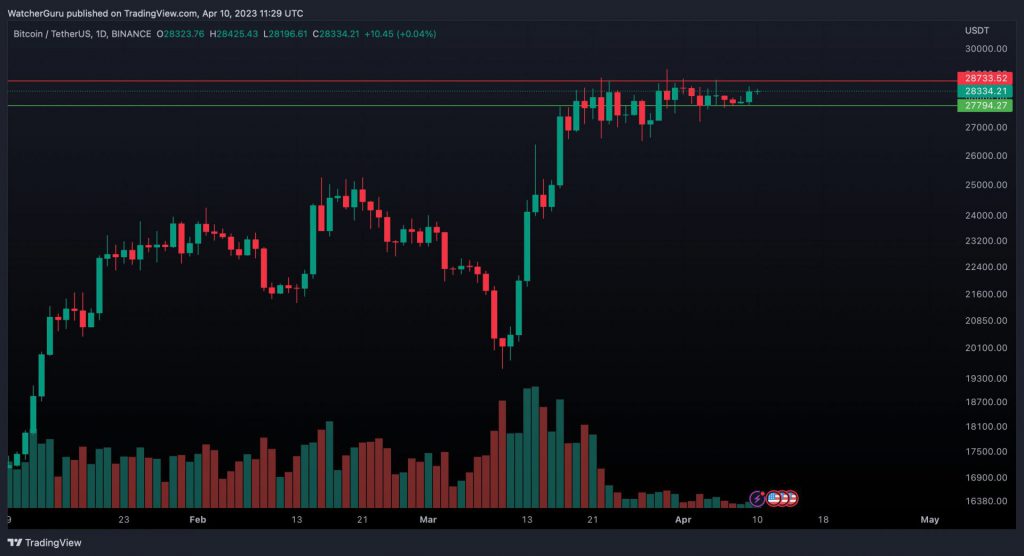Since early March, Bitcoin (BTC) has seen increased buying, with prices jumping from around $20k on 11 March, to $28.3k at press time. Nonetheless, the CPI (Consumer Price Index) data for the month of March, due on April 12th, may bring in some fresh volatility for the crypto market. The Federal Reserve will also release the minutes of its latest FOMC (Federal Open Market Committee) meeting.
Although markets want to see a faster inflation decline, their view seems to diverge from that of the Fed. Although market sentiment indicated that rate increases will likely not last for very long, the Federal Reserve is still hawkish. As per the data from CME Group’s FedWatch tool, the Fed will likely repeat its 0.25% hike. Furthermore, according to analyst James Choi, the upcoming CPI data will set dollar strength on a three-month freefall. Choi stated,
“People seem to have no idea how the $USD $DXY will fall in the next 3 months.”
However, Bitcoin (BTC) may have something to gain amid the volatility that may follow the CPI data release.
How Bitcoin (BTC) may react to this month’s CPI data?
Volatility is how most traders earn profits in a turbulent market and the data seems to show that there is plenty of volatility. According to Kaiko, when it comes to volatility, Bitcoin is moving away from stocks. The difference between Nasdaq’s 30-day rolling volatility and Bitcoin reached its highest levels in a year as a result of the U.S. banking crisis.
Kaiko reported last week that the correlation between Bitcoin (BTC) and gold is currently stronger than the correlation between Bitcoin (BTC) and the S&P 500. The inverse correlation between BTC and the U.S. dollar, according to Kaiko, is also swiftly dissipating.
Going by the trend, if the U.S. Dollar loses its grip, we may even see a fall in BTC prices in the short term, due to the falling correlation. BTC currently faces resistance at $28733.52, with support at $27794.27.


At press time, BTC was trading at $28,361.32, up by 1.7% in the last 24 hours.





